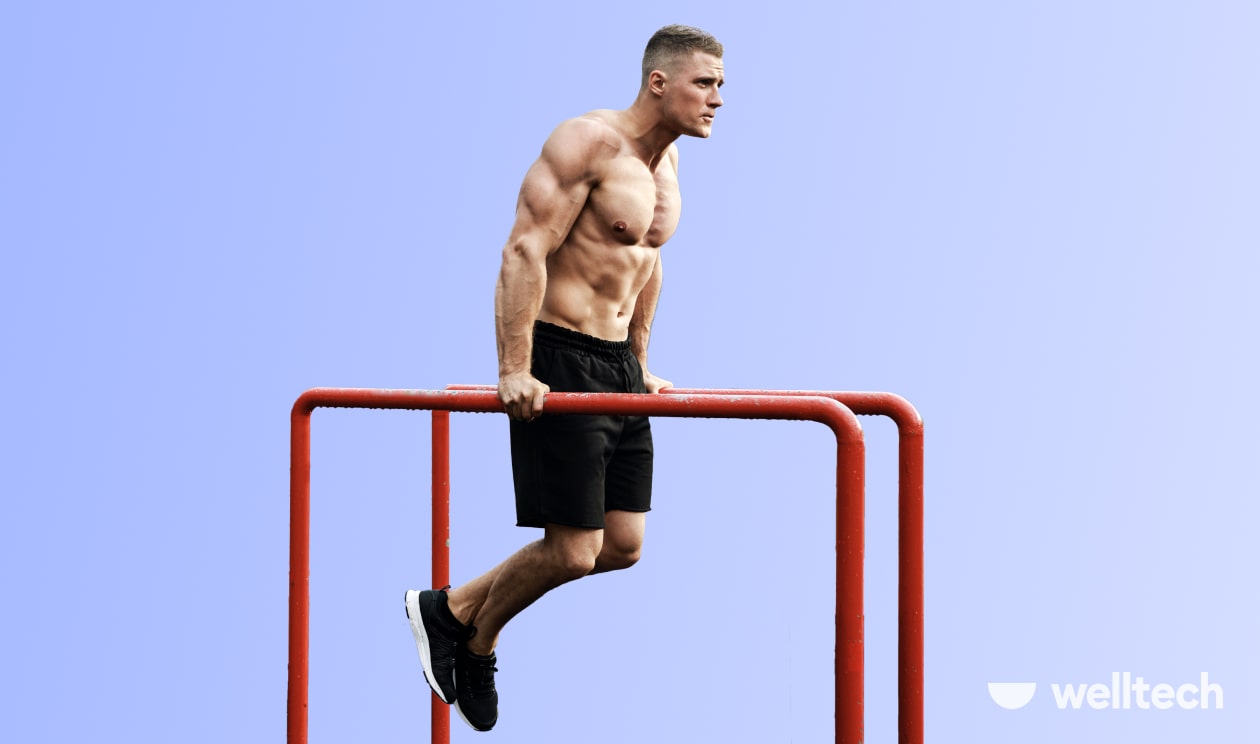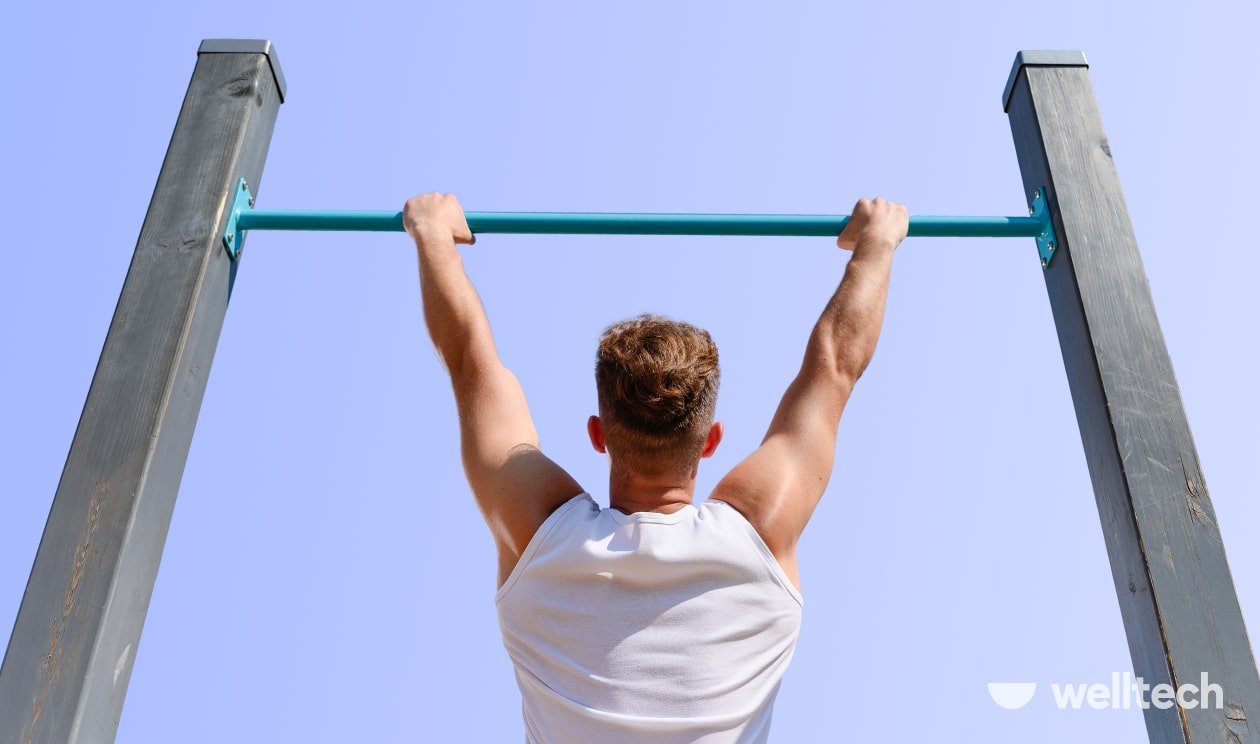10 Essential Pull Exercises For a Pull Day [Dumbbells & Resistance Band]
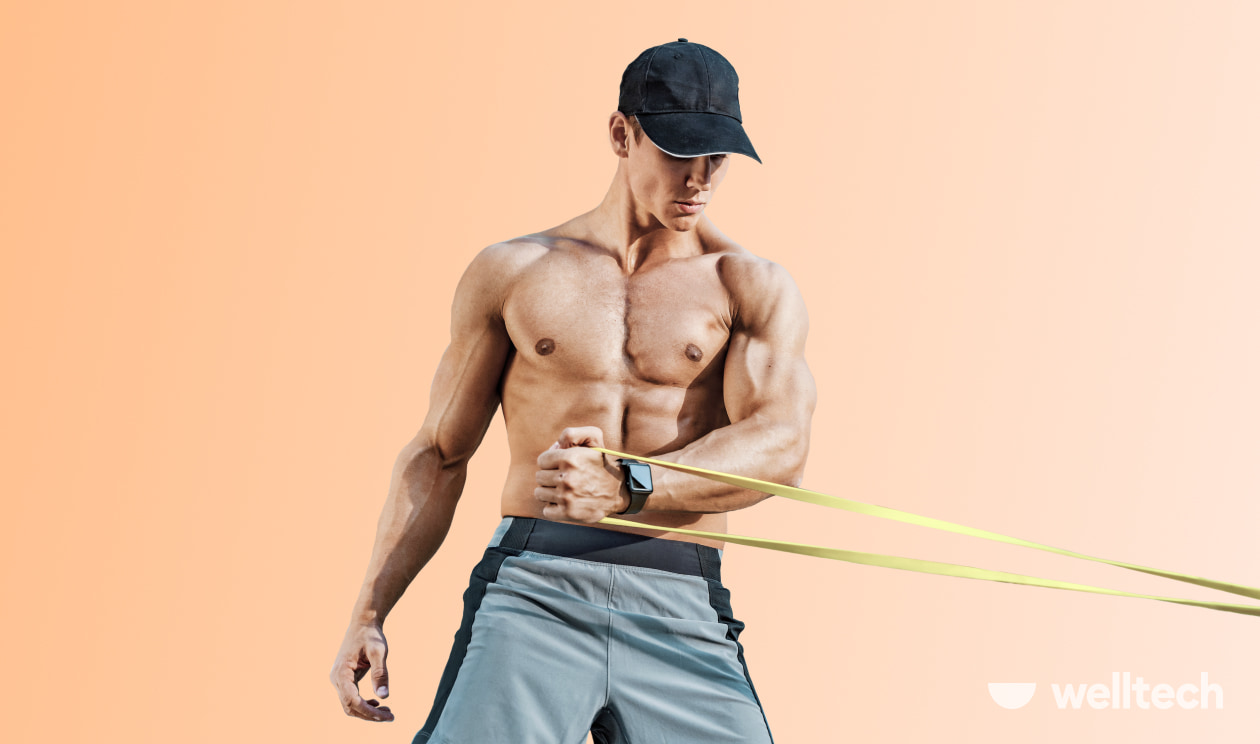


Table of Contents
- What Are Pull Exercises & a Pull Day?
- 10 Best Pull-Day Exercises
- At-Home Pull Workouts For Your PPL Routine
- Wrapping Up
If you are undertaking resistance training to improve your strength, you should definitely include pull exercises in your routine, especially if you already include push workouts. When you perform pull exercises, you work the muscles in the back and biceps, which are the opposing muscles to the chest and triceps muscles you work in a push workout.
In this article, we outline what pull exercises are and why you should add them to your training schedule and offer some pull exercises and workout examples to get you started.
What Are Pull Exercises & a Pull Day?
Pull exercises are concentric movements that entail pulling a weight towards the body. They mainly target the posterior deltoids, forearms, biceps, and back muscles.
You can perform pull exercises using dumbbells, cables, resistance bands, barbells, and machines. There are also some very effective bodyweight pull exercises, such as pull-ups and chin-ups.
A pull day is a workout split that includes only pull exercises. Some leg exercises that target the hamstrings may also be classified as pulling movements. However, the term “pull-day” usually indicates workouts that include upper-body pulling exercises.
Pull days can be implemented as part of a PPL split, also known as push-pull-legs. The aim of using this split is to focus on just a few muscle groups per session to achieve a higher training volume and induce hypertrophy. For this reason, pull days are usually introduced in fitness programs aimed at developing muscle mass, although they can also be performed as part of a strength workout.
Benefits of Pull Exercises
Pull exercises can aid one’s health by providing the following benefits:
- Pulling exercises are beneficial for developing the back muscles. Developing the back can not only round out your physique, but also help improve the posture of those who work an office job, as sitting for many hours a day can lead to weakened upper back muscles and postural imbalances. [1] [2]
- Pull workouts can lead to gains in muscle strength and mobility which can support day-to-day movements as well as more strenuous activities, such as moving heavy objects and performing heavier lifts in the gym more safely due to the proper recruitment of well-developed posterior muscles. [3]
- Pull exercises work multiple muscle groups simultaneously. Compound exercises like pull exercises recruit more muscle fibers at once, which can lead to greater developments in strength and cardiovascular fitness. [4] [5]
You may also like: Bro Split
10 Best Pull-Day Exercises
Here are some of the best pull exercises to train your back and arms.
These pull exercises can be performed at the gym or at home with just a pair of dumbbells or a resistance band.
Bicep Curls
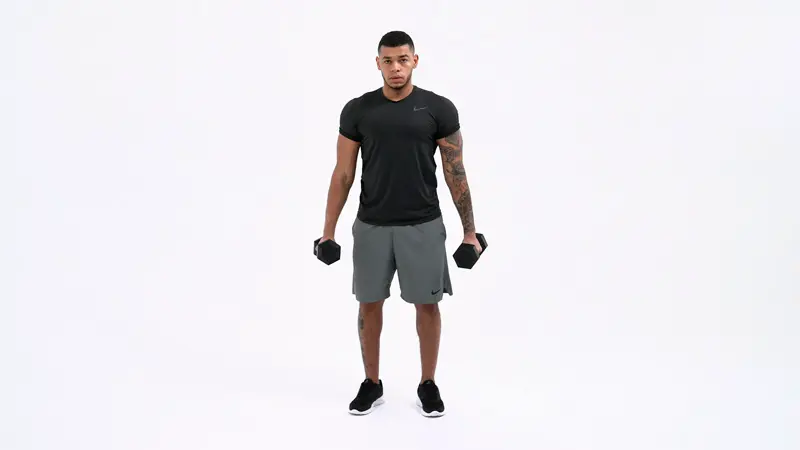
Technique
Holding a dumbbell in each hand, stand upright with your feet hip-width apart and your arms extended along your sides with the palms facing forward. Bend the elbows to move the dumbbells to the shoulders, then extend the arms back down to complete the repetition.
Keep your elbows in the same location and avoid swinging the weights to ensure the biceps do the work and not the shoulders.
Resistance Band Lat Pulldowns
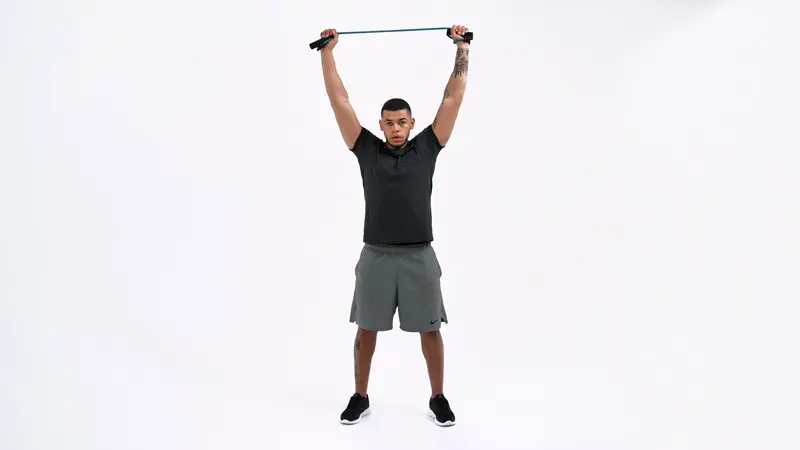
Technique
Hold the resistance band, placing your hands roughly shoulder-width apart, then extend the arms straight up above your head. Lower your arms while pulling the resistance band out to the sides until your arms are parallel to the floor and the band reaches chest height. Pause, then reverse the motion to return to the starting position with your arms overhead.
Resistance Band Seated Row
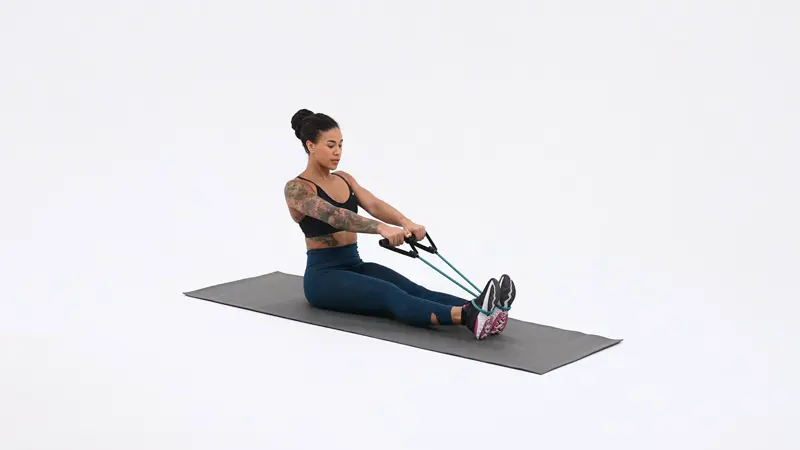
Technique
Place yourself in a seated position with your legs fully extended and your torso upright. Wrap the band around your feet and grab each end of the band with your hands. Keeping your back straight and chest up, bend at the elbows to pull the band back, squeezing your shoulder blades together as you contract the back muscles. Extend the arms forward again to complete the repetition.
You may also like: Side Delt Dumbbell Exercises
Dumbbell Drag Curl
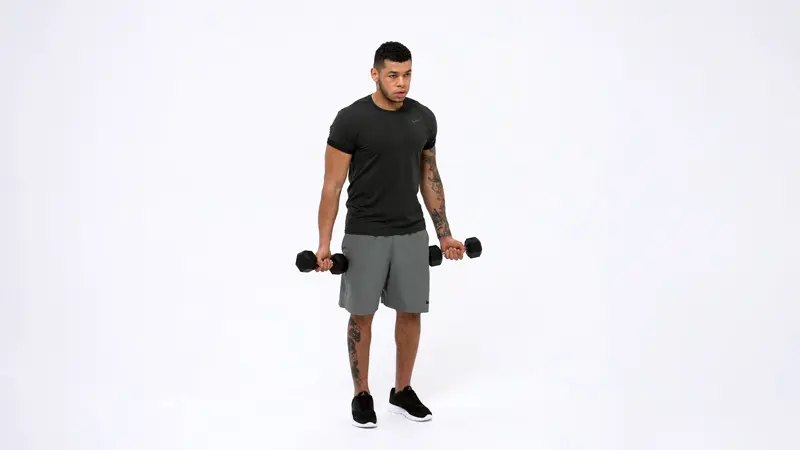
Technique
Stand holding a dumbbell in each hand. Draw the elbows back and up to lift the dumbbells towards the shoulders, then extend the elbows to lower the dumbbells down.
Single-Arm Row
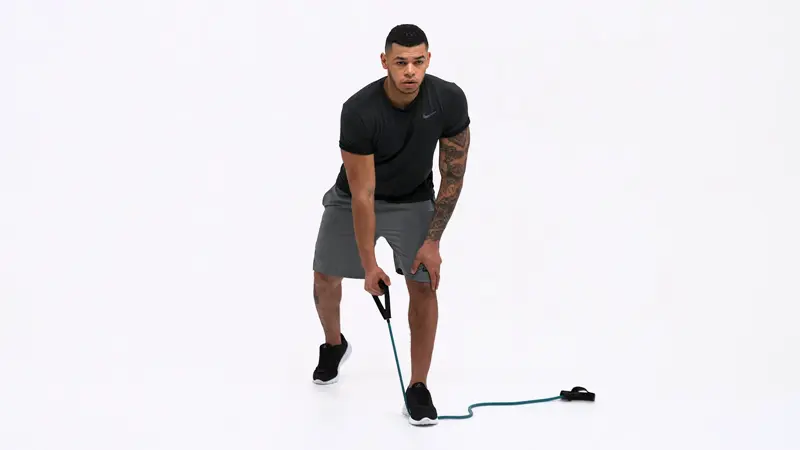
Technique
You can perform this exercise with either a handle band or a dumbbell.
Holding a handle of your resistance band in one hand, stand upright, then bend the torso forward from the hips until parallel to the floor. Extend the arm holding the handle down, then bend the elbow to pull the band towards your waist. Gently extend the arm to lower the weight back down. Repeat on both sides.
Resistance Band Bent-Over Rows
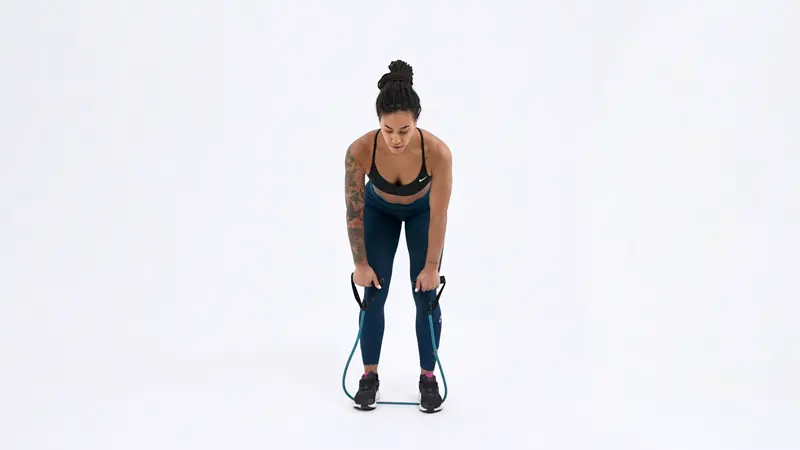
Technique
From a standing position, place a resistance band underneath your feet, then hold each end with your hands. Hinge at the hips to bend your torso forward. Once in position, draw the elbows back to pull the band up, squeezing the shoulder blades together to contract the back muscles. Then, gently extend the arms to shorten the bands and release the tension.
Renegade Row
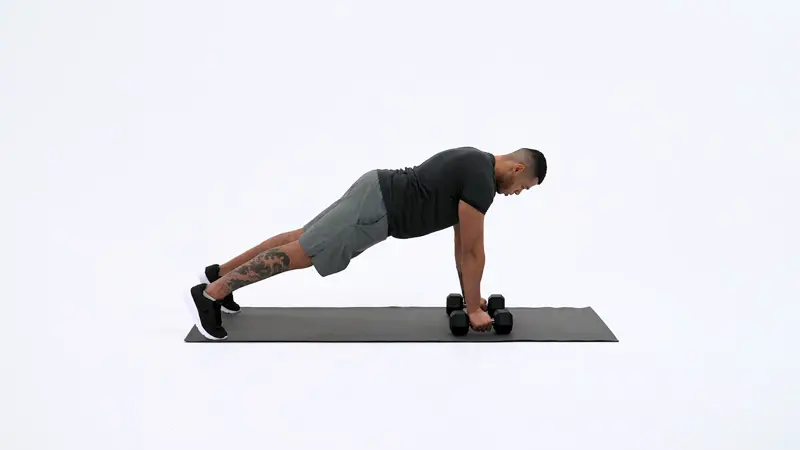
Technique
Place yourself in an extended plank position whilst holding a dumbbell in each hand, making sure the palms are facing each other. Keeping the core tight, bend one elbow up to lift the dumbbell to the waist. Gently lower it down to the starting position, then repeat with the other dumbbell.
Dumbbell Reverse Flyes
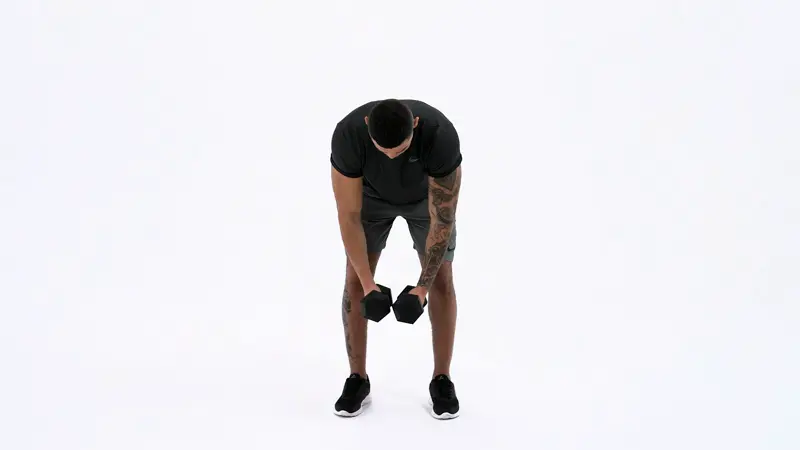
Technique
Stand holding a dumbbell in each hand. Hinge at the hips to tilt the torso forward and extend the arms down with the palms facing each other. Open the arms out and up until parallel to the floor, squeezing the back muscles as you lift. Lower the weights down with control to complete the repetition.
Hammer Curls
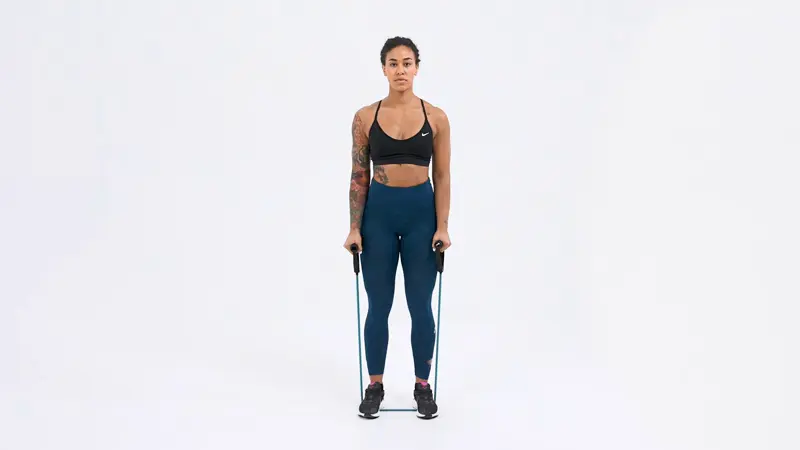
Technique
Place a resistance band under your feet, holding the handles. Extend the arms down your sides with the palms facing in. Bend the elbows to pull the band towards the shoulders, then extend the arms to lower back to the starting position.
Dumbbell Trap Shrugs
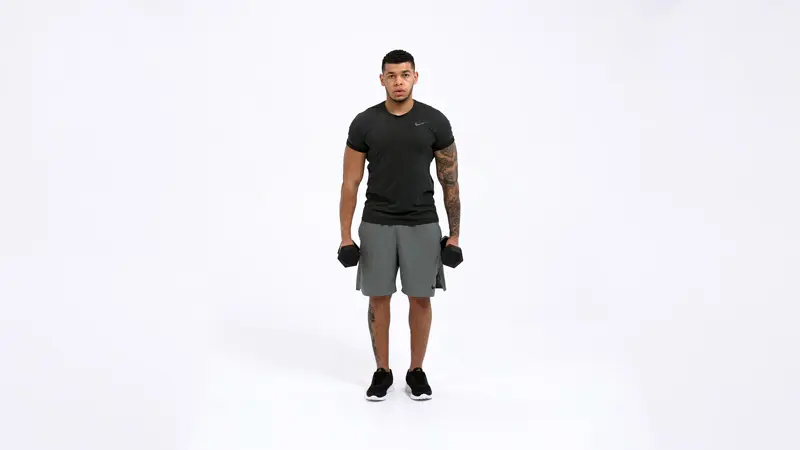
Technique
Stand upright whilst holding a dumbbell in each hand with the arms down at the sides. Keeping the elbows straight, lift the shoulders to squeeze the trap muscles, then lower the shoulders back to their natural position.
At-Home Pull Workouts For Your PPL Routine
Below, you can find three pull-day workout examples with exercises that can be performed with dumbbells or elastic bands.
Alternatively, you can use a workout-builder app to create your own workouts and include more free-weight pull exercises.
Workout 1
| Exercise | Reps | Sets | Rest (seconds) |
| Renegade Rows | 8-10 | 5 | 90 |
| Superset | 3-4 | 60-90 | |
| Resistance Band Lat Pulldowns | 10-12 | ||
| Dumbbell Reverse Flyes | 12-15 | ||
| Superset | 3-4 | 60-90 | |
| Biceps Curls | 10-12 | ||
| Dumbbell Trap Shrugs | 10-12 | ||
| Resistance Band Seated Row | 10-12 | 3-4 | 60-90 |
| Single-Arm Rows (Dumbbells / Handle band) | 8-10 | 3-4 | 60 |
| Hammer Curls | 12-15 | 3 | 60 |
Workout 2
| Exercise | Reps | Sets | Rest (seconds) |
| Resistance Band Lat Pull Downs | 10-12 | 4 | 60 |
| Resistance Band Seated Rows | 10-12 | 4 | 60 |
| Dumbbell Trap Shrugs | 10-12 | 4 | 60 |
| Superset | 3-4 | 60-90 | |
| Renegade Rows | 10-12 | ||
| Dumbbell Drag Curls | 12-15 | ||
| Superset | 3-4 | 60-90 | |
| Single-Arm Rows (Dumbbells / Handle band) | 10-12 | ||
| Hammer Curls | 12-15 | ||
| Resistance Band Bent-Over Rows | 12-15 | 3-4 | 60 |
Workout 3
| Exercise | Reps | Sets | Rest (seconds) |
| Superset | 3-4 | 60-90 | |
| Resistance Band Seated Row | 10-12 | ||
| Single-Arm Rows (Dumbbells / Handle band) | 8-10 | ||
| Superset | 3-4 | 60-90 | |
| Resistance Band Lat Pull Downs | 10-12 | ||
| Resistance Band Bent-Over Rows | 10-12 | ||
| Superset | 3-4 | 60-90 | |
| Dumbbell Curls | 10-12 | ||
| Hammer Curls | 15 | ||
| Renegade Rows | 10 | 4 | 60 |
| Dumbbell Trap Shrugs | 12 | 4 | 60 |
| Dumbbell Bent Over Flyes | 12 | 4 | 60 |
Complete your pull workouts with some side glute exercises.
Wrapping Up
Pull exercises can be a great complement to your workouts, even if you’re into fast workout programs. Below you can find the main key points about pull exercises and pull days:
- Pull days include concentric exercises that move a weight towards the body and target the back, biceps, forearms and posterior deltoids, usually in a hypertrophic rep range
- You can perform pull exercises using a selection of equipment, although some bodyweight options can be a valuable alternative, such as chin-ups and pull-ups
- Pull splits are usually used to refer to upper-body workouts, although exercises targeting the hamstrings can also be classed as pull movements
- Pull days can be implemented as part of a PPL split, as they complement push days by working opposing muscles, enabling one to build muscles evenly
- Pulling movements can help improve posture by working the back muscles, especially for those who have weakened upper back muscles due to spending many hours sitting at a desk
- Workouts that involve pulling motions can help develop strength, which can result in improved mobility in both daily and more strenuous activities
- Exercises that involve multiple joints, like pull exercises, recruit more muscles and place greater demands on the cardiovascular system, leading to better gains in strength and cardiovascular fitness
